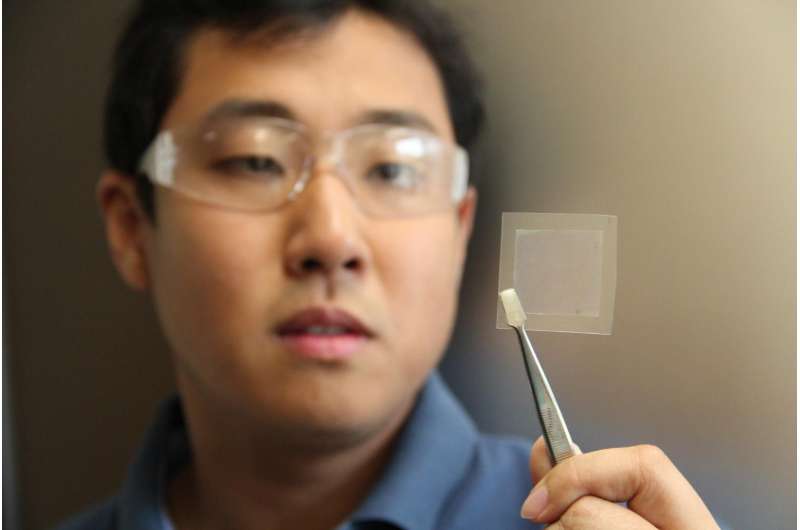Team makes high-quality graphene with soybeans

A breakthrough by CSIRO-led scientists has made the world's strongest material more commercially viable, thanks to the humble soybean.
Graphene is a carbon material that is one atom thick.
Its thin composition and high conductivity means it is used in applications ranging from miniaturised electronics to biomedical devices.
These properties also enable thinner wire connections; providing extensive benefits for computers, solar panels, batteries, sensors and other devices.
Until now, the high cost of graphene production has been the major roadblock in its commercialisation.
Previously, graphene was grown in a highly-controlled environment with explosive compressed gases, requiring long hours of operation at high temperatures and extensive vacuum processing.
CSIRO scientists have developed a novel "GraphAir" technology which eliminates the need for such a highly-controlled environment.
The technology grows graphene film in ambient air with a natural precursor, making its production faster and simpler.
"This ambient-air process for graphene fabrication is fast, simple, safe, potentially scalable, and integration-friendly," CSIRO scientist Dr Zhao Jun Han, co-author of the paper published today in Nature Communications said.
"Our unique technology is expected to reduce the cost of graphene production and improve the uptake in new applications."
GraphAir transforms soybean oil - a renewable, natural material - into graphene films in a single step.
"Our GraphAir technology results in good and transformable graphene properties, comparable to graphene made by conventional methods," CSIRO scientist and co-author of the study Dr Dong Han Seo said.
With heat, soybean oil breaks down into a range of carbon building units that are essential for the synthesis of graphene.
The team also transformed other types of renewable and even waste oil, such as those leftover from barbecues or cooking, into graphene films.
"We can now recycle waste oils that would have otherwise been discarded and transform them into something useful," Dr Seo said.
The potential applications of graphene include water filtration and purification, renewable energy, sensors, personalised healthcare and medicine, to name a few.
Graphene has excellent electronic, mechanical, thermal and optical properties as well.
Its uses range from improving battery performance in energy devices, to cheaper solar panels.
CSIRO are looking to partner with industry to find new uses for graphene.
Researchers from The University of Sydney, University of Technology Sydney and The Queensland University of Technology also contributed to this work.
More information: Dong Han Seo et al, Single-step ambient-air synthesis of graphene from renewable precursors as electrochemical genosensor, Nature Communications (2017). DOI: 10.1038/ncomms14217
Journal information: Nature Communications
Provided by CSIRO



















